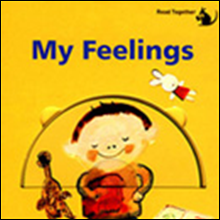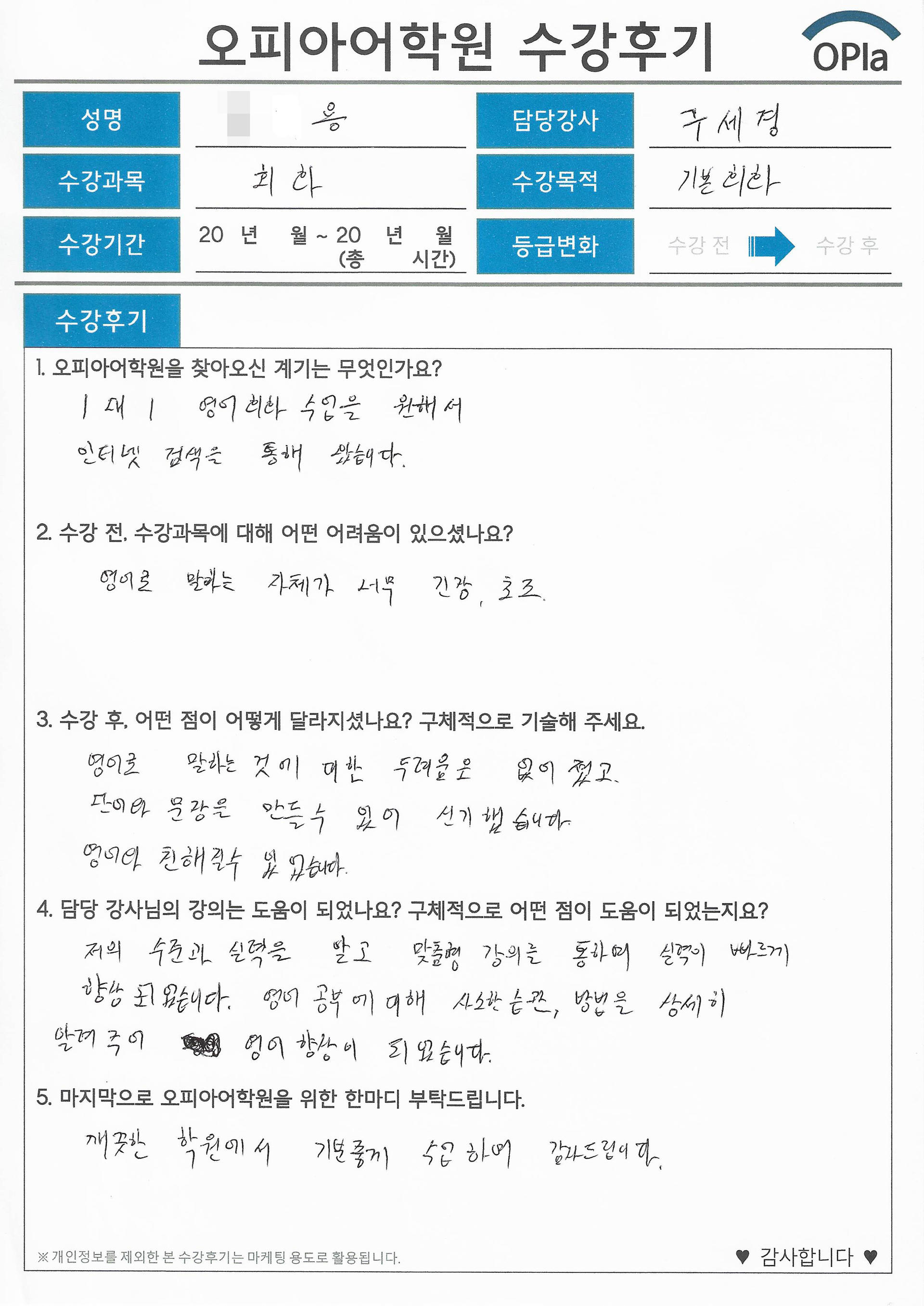기분 영어
기분 영어는 영어로 표현하는 감정이나 기분을 말하는 것을 의미합니다. 기분 영어는 회사 업무, 학교 활동, 사교 모임 등 다양한 상황에서 사용됩니다. 기분을 표현하는 것은 자기 표현력과 커뮤니케이션 능력을 향상시키는 데 도움이 됩니다. 또한, 영어를 사용하는 상황에서 기분을 표현하는 것은 외국인과의 의사소통에도 중요합니다.
왜 기분 영어를 사용해야 할까?
기분 영어를 사용하는 것은 자신의 기분을 제대로 전달하는 데 도움이 됩니다. 자신의 기분을 내면에 숨기지 않고 표현하는 것은 자기 자신과 타인에게 이해할 수 있는 기회를 제공합니다. 이는 자신의 성격과 능력을 잘 드러내는 것이라 할 수 있습니다.
또한, 영어를 사용하는 상황에서 기분 영어를 사용하는 것은 외국인과 의사소통하는 데 큰 도움이 됩니다. 외국인은 자신의 언어를 사용하여 자신의 기분을 전달하는 것이 쉽지 않을 수 있습니다. 따라서 영어를 사용하는 상황에서 기분 영어를 사용하면 의사소통이 원활해질 가능성이 높습니다.
자주 사용되는 기분 영어 표현들
1. I feel happy – 나는 행복해요.
2. I feel sad – 나는 슬퍼요.
3. I feel angry – 나는 화가 나요.
4. I feel nervous – 나는 불안해요.
5. I feel excited – 나는 설레여요.
6. I feel tired – 나는 지친 것 같아요.
7. I feel relaxed – 나는 편안해요.
8. I feel bored – 나는 지루해요.
기분에 따른 다양한 표현
기분에 따라 다양한 표현을 사용할 수 있습니다. 아래는 기분에 따른 다양한 표현 예시입니다.
– 행복한 기분: joyful, delighted, ecstatic, elated, overjoyed, thrilled
– 슬픈 기분: sorrowful, grieving, mourning, melancholic, heartbroken, saddened
– 화난 기분: frustrated, irritated, annoyed, enraged, furious, seething
– 불안한 기분: anxious, worried, uneasy, apprehensive, tense, nervous
– 설렌 기분: thrilled, excited, overjoyed, jubilant, delighted, elated
– 지친 기분: exhausted, weary, fatigued, tired, drained, spent
– 편안한 기분: relaxed, calm, peaceful, serene, comfortable
– 지루한 기분: bored, uninterested, disinterested, dull, tedious, monotonous
기분 영어 표현에서 잘못 사용되는 부분들
기분 영어는 일상에서 자주 사용되지만, 잘못 사용될 수 있는 부분이 있습니다. 예를 들어, “I am sick”라는 표현은 보통 병에 걸렸을 때 사용하는 표현입니다. 하지만, 영어에서는 “I am sick”는 소스적인 표현이며, 나쁜 기분을 나타내는 것으로 이해됩니다. 즉, “I am sick”는 만약 입이 아프다면 사용해도 좋으나 나쁜 기분을 나타내는 경우에는 어떤 식으로 표현할지 다른 표현들을 사용해야 합니다.
기분 영어 표현에서 주의해야 할 점
기분 영어를 사용할 때 주의해야 할 점은 다음과 같습니다.
1. 문장 구조: 기분을 나타낼 때 문장 구조도 중요합니다. 적절한 형용사나 감탄사를 사용하면서 목적어와 주어를 제대로 사용해야 합니다.
2. 문화와 관련: 영어는 국가나 문화마다 다르게 사용됩니다. 따라서, 한국어에서 사용하는 기분 표현이 영어에서도 일관된 의미로 사용될 수 있는 것은 아닙니다. 문화적 차이를 고려하면서 사용하는 것이 좋습니다.
3. 비속어 사용: 기분 영어에서 비속어 사용은 좋지 않습니다. 비속어는 자신의 기분을 나쁘게 표현하고 남들에게 혼란스러움을 줄 수 있습니다.
기분 영어를 사용한 상황들 예시
1. 비즈니스 회의: “I have to say, I am a bit worried about the sales numbers for this quarter”, “I am thrilled with the progress we’re making on this project”.
2. 학교 수업: “I am feeling nervous about the final exam tomorrow”, “I am excited to go on the field trip next week”.
3. 친구와의 대화: “I am feeling a bit tired, do you mind if we sit here for a bit?”, “I am so happy to see you, it’s been too long!”
기분 영어를 잘 활용하기 위한 방법들
1. 관찰: 일상적인 상황에서 다양한 기분을 관찰하면서 적절한 표현을 기억해두는 것이 좋습니다.
2. 읽기: 영문 신문, 소설 등을 접하면서 다양한 영어 기분 표현들을 익힐 수 있습니다.
3. 대화: 영어를 사용하는 대화 상황에서 친구나 가족들과 자주 대화하면서 기분 영어를 사용하는 것이 좋습니다.
4. 업무 상황: 비즈니스 영어를 관련짓는 업무상황에서 다양한 기분과 표현을 사용하는 것이 좋습니다.
기분 영어를 학습하는 것의 장점들
1. 자기 표현력 개선: 자신의 기분을 다양한 표현들로 표현할 수 있다면 자기 표현력이 증가됩니다.
2. 외국인과 의사소통 능력 개선: 외국인과 의사소통할 때 기분 영어를 올바르게 사용하면 의사소통 능력이 개선됩니다.
3. 커뮤니케이션 수준 향상: 기분 영어를 사용하면 커뮤니케이션 수준이 향상되는데, 이는 일상생활에서도 큰 도움이 됩니다.
4. 창의성과 상상력 증진: 다양한 기분과 표현을 활용하는 것은 창의성과 상상력을 증진하는 데도 도움이 됩니다.
5. 직업적인 적응력 증진: 영어 기분 표현 역시 직업 상황에서 요구되는 능력 중 하나입니다. 따라서, 영어적 기분표현 능력이 높다면 직업적 적응력 증가 또는 해외 파견 시에도 큰 도움이 됩니다.
기분 표현 단어, 영어 감정표현 단어, 다양한 영어 감정 표현, 감정 영어 종류, 영어 감정 표현 정리, 기분 좋다 영어로, 영어 감정 형용사 모음, 수능 영어 감정 단어기분 영어 – 이번 글에서는 이들 단어 및 표현을 다뤄보았습니다. 영어 기분 표현은 일상생활에서 자주 사용하게 됩니다. 적절한 기분 표현 사용은 언어적 능력뿐만 아니라 인간 관계와 체류환경에서 일어나는 일을 완벽하게 설명하고 이해하도록 도와줍니다. 영어 기분 표현을 잘 활용하고, 다양한 표현을 익혀둔다면, 국내에서와 해외에서의 글로벌 대화나 업무상황에서 핵심적인 능력을 발휘할 수 있습니다.
사용자가 검색한 키워드: 기분 영어 기분 표현 단어, 영어 감정표현 단어, 다양한 영어 감정 표현, 감정 영어 종류, 영어 감정 표현 정리, 기분 좋다 영어로, 영어 감정 형용사 모음, 수능 영어 감정 단어
Categories: Top 46 기분 영어
‘be동사+형용사’로 원어민처럼 내 감정 표현하기💕 입에 착붙는 은하수업 스피킹 🌌
여기에서 자세히 보기: future-user.com
기분 표현 단어
In this article, we will explore the different types of 기분 표현 단어 in Korean, their origins, and how to use them in specific situations.
Types of 기분 표현 단어 in Korean
There are many different types of 기분 표현 단어 in Korean. Some of the most common types include:
1. 즐거움 (jeulgeo-um) – This means happiness or joy. It is used to describe a positive emotion or feeling.
2. 화남 (hwanam) – This means anger. It is used to describe a negative emotion that is associated with frustration or irritation.
3. 슬픔 (seulpeum) – This means sadness. It is used to describe a negative emotion that is associated with sorrow or grief.
4. 불안 (buran) – This means anxiety. It is used to describe a negative emotion that is associated with worry or fear.
5. 설레임 (seolle-im) – This means excitement. It is used to describe a positive emotion that is associated with anticipation or thrill.
6. 지루함 (jiru-ham) – This means boredom. It is used to describe a negative emotion that is associated with monotony or tedium.
7. 기쁨 (gippeum) – This means happiness. It is used to describe a positive emotion that is associated with pleasure or contentment.
8. 놀람 (nollam) – This means surprise. It is used to describe a positive emotion that is associated with amazement or astonishment.
9. 걱정 (geokjeong) – This means worry. It is used to describe a negative emotion that is associated with concern or apprehension.
10. 불만 (bulman) – This means dissatisfaction. It is used to describe a negative emotion that is associated with discontent or unhappiness.
Origins of 기분 표현 단어 in Korean
The origins of 기분 표현 단어 in Korean can be traced back to the language’s long and storied history. Korean has a number of influences from other languages, including Chinese and Japanese. This has led to a rich vocabulary of words and phrases that are unique to the Korean language.
One of the most significant influences on Korean vocabulary came from the Mongol Empire, which ruled over Korea from the 13th to 14th centuries. During this time, many Mongolian words were adopted into the Korean language, including words that were used to describe emotions and feelings.
Another important influence on Korean vocabulary came from the Chinese language. Chinese was the language of scholars and intellectuals in Korea for many centuries, and this led to the adoption of many Chinese words and phrases into the Korean language. Many of these words were used to describe emotional states and feelings.
How to use 기분 표현 단어 in Korean
Using 기분 표현 단어 in Korean is relatively easy, but it requires an understanding of the different contexts in which these words and phrases are used. Depending on the situation, some words and phrases may be more appropriate than others. Here are some tips on how to use 기분 표현 단어 in Korean:
1. Use appropriate vocabulary for the situation – The first step in using 기분 표현 단어 in Korean is to choose the right words for the situation. For example, if you are feeling happy, you would use words like 즐거움 or 기쁨. If you are feeling sad, you would use words like 슬픔 or 불안.
2. Consider the level of formality – The level of formality is an important consideration when using 기분 표현 단어 in Korean. In formal settings, it is important to use polite language and avoid slang or informal expressions. In informal settings, you can be more relaxed and use casual language.
3. Pay attention to body language – Body language is an important aspect of communication in Korean. When expressing emotions, it is important to pay attention to your body language, as well as the body language of the person you are communicating with. Facial expressions, gestures, and tone of voice can all convey different emotions and feelings.
4. Use appropriate grammar – Grammar is an important consideration when using 기분 표현 단어 in Korean. The Korean language has a complex grammar system, and it is important to use the appropriate grammatical structures for different situations.
FAQs
Q: How many 기분 표현 단어 are there in Korean?
A: There are many different 기분 표현 단어 in Korean, including words that describe a range of emotions and feelings.
Q: How do I know which 기분 표현 단어 to use?
A: The choice of 기분 표현 단어 will depend on the specific situation and the emotion or feeling that you want to express.
Q: Can I use 기분 표현 단어 in both formal and informal settings?
A: Yes, 기분 표현 단어 can be used in both formal and informal settings, but the level of formality will vary depending on the situation.
Q: Can body language convey emotions in Korean?
A: Yes, body language is an important aspect of communication in Korean, and it can convey emotions and feelings in addition to language.
Q: Are there any cultural differences in the use of 기분 표현 단어?
A: Yes, there may be cultural differences in the use of 기분 표현 단어. In Korean culture, it is common to withhold strong emotions, especially in public settings. This may influence the use of certain words and phrases.
영어 감정표현 단어
Koreans place a high value on emotional expression and believe that being able to convey emotions effectively is essential for building strong relationships. As such, Korean language learners must become familiar with 영어 감정표현 단어 in order to communicate effectively with native speakers and build lasting connections.
Some of the most common 영어 감정표현 단어 in Korean include:
– 기쁨 (gi-ppum) – happiness/joy
– 슬픔 (seul-peum) – sadness
– 분노 (bun-no) – anger/rage
– 사랑 (sa-rang) – love
– 미움 (mi-eum) – hatred/disgust
– 두려움 (du-ryeo-um) – fear
– 실망 (sil-mang) – disappointment
– 즐거움 (jeul-geo-um) – delight
– 기대감 (gi-dae-gam) – excitement
– 개운함 (gae-un-ham) – freshness
It is essential to learn these words in context, as they can have slightly different meanings depending on the situation and the speaker’s tone of voice. For example, the word 기쁨 (gi-ppum) can mean happiness or joy, but it can also be used to convey a sense of relief or satisfaction.
영어 감정표현 단어 are often used in conversation to express oneself more effectively. For example, instead of saying “I’m sad,” a Korean speaker may use the word 슬픔 (seul-peum) to convey a deeper sense of emotion. Similarly, instead of saying “I’m angry,” they may use the word 분노 (bun-no) to convey a stronger sense of rage or frustration.
Learning how to use 영어 감정표현 단어 effectively is essential for both beginners and advanced Korean learners. It not only allows learners to communicate more effectively but also enhances their understanding of Korean culture and society.
FAQs:
Q: What is the best way to learn 영어 감정표현 단어 in Korean?
A: The best way to learn 영어 감정표현 단어 is to practice them in context. Try using these words in conversation with native speakers and ask for feedback. You can also watch Korean movies, TV shows, and dramas to hear these words being used in different situations.
Q: Are 영어 감정표현 단어 used in written Korean?
A: Yes, these words are frequently used in written Korean as well as spoken Korean. They are often used in literature, poetry, and song lyrics to convey a sense of emotion and feeling.
Q: Are there any cultural differences that I should be aware of when using 영어 감정표현 단어 in Korean?
A: Yes, cultural context is always important when using language. In Korean culture, for example, it is considered impolite to express anger or frustration openly. Instead, Koreans often use indirect language to convey their emotions, such as using the words 실망 (sil-mang) or 미안 (mi-an) to express disappointment or apology.
Q: Can 영어 감정표현 단어 have multiple meanings?
A: Yes, many words in Korean have multiple meanings depending on the context and the speaker’s tone of voice. It is important to practice using these words in different contexts to become familiar with their various meanings.
Q: Are there any common expressions or phrases that use 영어 감정표현 단어 in Korean?
A: Yes, there are many common expressions and phrases that use these words. For example, the expression 기분 좋다 (gi-bun jo-da) means “to feel good/happy,” while the phrase 마음이 아프다 (ma-eum-i a-peu-da) means “to feel heartbroken/sad.”
Conclusion:
In conclusion, 영어 감정표현 단어 are essential for effective communication in Korean. These words convey a vast range of emotions and are integral to building strong relationships in Korean culture. By learning how to use these words effectively, Korean language learners can enhance their understanding of the language, the culture, and society. If you’re interested in learning Korean, make sure to focus on these essential words, and practice them in conversation with native speakers for the best results.
다양한 영어 감정 표현
Happy:
When expressing happiness, one can use a range of adjectives to describe their emotions. Some commonly used words are: joyful, ecstatic, elated, thrilled, thrilled to bits, over the moon, and on cloud nine. For example, if someone is extremely happy about something, they might say “I’m over the moon about it!” or “I’m thrilled to bits!”
Sad:
When expressing sadness, one can use words like: depressed, down, low, unhappy, heartbroken, and devastated. For example, someone experiencing heartbreak might say “I feel completely devastated by what happened.”
Angry:
One can express anger through a variety of words like: furious, annoyed, upset, frustrated, pissed off, outraged, and livid. For example, someone who is very angry might say “I’m so outraged! How could they do this to me?”
Surprised:
When expressing surprise, one can use a number of adjectives like: shocked, bewildered, stunned, flabbergasted, amazed, and astounded. For example, if something surprising happens, someone might say “I’m absolutely astounded! I can’t believe this is happening!”
FAQs:
Q: How can I learn these expressions better?
A: Practice is key. Try using these expressions in your everyday conversations to give them context and help you remember them better. You can also try creating flashcards with the expressions on one side and their meanings on the other.
Q: Are there any expressions that are commonly used in English but not in Korean?
A: Yes, there are many expressions that are commonly used in English that are not used in Korean. This is why it’s important to practice using them and to understand their meanings.
Q: Can I use these expressions in formal situations?
A: Some expressions are more casual than formal, so it depends on the situation. It’s always best to use more formal language when speaking in formal situations. However, in casual situations, it can be perfectly appropriate to use these expressions.
Q: What’s the difference between “upset” and “angry”?
A: “Upset” and “angry” both describe negative emotions, but “upset” is generally used to describe a more mild form of frustration or annoyance, while “angry” describes a stronger emotion that often includes feelings of resentment or indignation.
Q: How do I know which expression to use?
A: The best way to know which expression to use is to practice using them in different situations so that you become familiar with their proper context. Additionally, context is key – you should choose an expression that accurately reflects the degree of your emotion and the situation in which you find yourself. If you’re not sure which expression to use, try asking a native speaker or a language teacher for advice.
Q: How can I sound more natural when using these expressions?
A: The best way to sound more natural is to practice using them in real-life situations. The more you use them, the more comfortable and confident you will become when using them. Additionally, try to pay attention to the intonation and emphasis of native speakers when they use these expressions. This can help you to sound more natural and fluent when using them yourself.
Q: Are there any regional differences in how these expressions are used?
A: Yes, idiomatic expressions can vary across regions and cultures. For example, some expressions used in American English may not be as commonly used in British English, and vice versa. It’s important to be aware of these differences when using English in different parts of the world.
Overall, English provides a wide range of expressions to express emotions, making it a rich and versatile language to learn. By practicing them and paying attention to their proper context and intonation, learners can better understand the nuances of how to express different emotions.
주제와 관련된 이미지 기분 영어

기분 영어 주제와 관련된 이미지 40개를 찾았습니다.








![스타트잉글리시] EP346. 스타트잉글리시] Ep346.](https://i.ytimg.com/vi/sr3d_TRR3bk/maxresdefault.jpg)
![ep.74]기분 안 나쁘게 솔직한 피드백 주는 방법ㅣ공손한 영어표현ㅣ실전미국영어 - YouTube Ep.74]기분 안 나쁘게 솔직한 피드백 주는 방법ㅣ공손한 영어표현ㅣ실전미국영어 - Youtube](https://i.ytimg.com/vi/hOAITdV8RsY/maxresdefault.jpg)
![Feelings (1)! 기분 ; 감정 [표현사전] | Gab! Gab! English Feelings (1)! 기분 ; 감정 [표현사전] | Gab! Gab! English](https://www.gabgabenglish.com/wp-content/uploads/box-cheerful-color-cute-207983-scaled.jpg)


![함께 있을 때 기분 좋은 사람을 영어로 표현하고 싶을 때? [영어독립 365/W3D4] - YouTube 함께 있을 때 기분 좋은 사람을 영어로 표현하고 싶을 때? [영어독립 365/W3D4] - Youtube](https://i.ytimg.com/vi/77zUMMvaA8s/maxresdefault.jpg)

![기초 영어 회화] 기초 영어 회화]](https://i.ytimg.com/vi/Vo2owuFaXwc/maxresdefault.jpg)
![일빵빵 가장 많이 쓰는 영어 표현 : 감정 ] 제 1강 – 느낌 / 기분을 나타내는 영어표현 - YouTube 일빵빵 가장 많이 쓰는 영어 표현 : 감정 ] 제 1강 – 느낌 / 기분을 나타내는 영어표현 - Youtube](https://i.ytimg.com/vi/OKIec1flsdY/maxresdefault.jpg)











![Podcast:[ 기초영어회화 ] 기분을 풀어주다 / 말이 잘못 나오다 / 마음을 상하게 하다:라이브 아카데미 토들러 Podcast:[ 기초영어회화 ] 기분을 풀어주다 / 말이 잘못 나오다 / 마음을 상하게 하다:라이브 아카데미 토들러](https://i.ytimg.com/vi/BmKpL--OVXg/maxresdefault.jpg)







![영어 표현] 기분 업! 기분 다운! 영어로 표현하기! pumped up! let down! calm down! bottle up 의미는? - YouTube 영어 표현] 기분 업! 기분 다운! 영어로 표현하기! Pumped Up! Let Down! Calm Down! Bottle Up 의미는? - Youtube](https://i.ytimg.com/vi/axHFo3S6oAg/maxresdefault.jpg)

![이보영의 하루 영어1문장] 캠핑 - 그거 정말 기분 전환이 돤다고! 영어로는?? - YouTube 이보영의 하루 영어1문장] 캠핑 - 그거 정말 기분 전환이 돤다고! 영어로는?? - Youtube](https://i.ytimg.com/vi/xJbPO9DdB9U/maxresdefault.jpg)

Article link: 기분 영어.
주제에 대해 자세히 알아보기 기분 영어.
- 기분 – WordReference 한-영 사전
- 기분을 표현하는 영어문장을 전부 다 써봤다.[아미고톡]
- 감정 영어표현/단어 총정리! 기분을 나타내는 표현들
- 기분 감정 표현 영어로 – 영어 일기 – 잉글리쉬700
- 영어 Translation of “기분” | Collins Korean-English Dictionary
- 긴장하다 영어로? 기분을 나타내는 다양한 영어표현 모음! – 엔구
- Feelings (1)! 기분 ; 감정 [표현사전]
더보기: future-user.com/wki
Để lại một bình luận